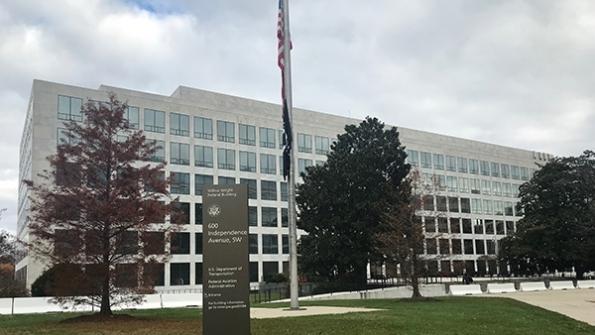
WASHINGTON—FAA’s shift to emphasizing corrective actions over civil penalties for unintentional regulatory violations needs more centralized oversight and data analysis to determine its effectiveness, a Government Accountability Office (GAO) review of the program shows.
The FAA, which believes the program is delivering as intended, plans to adopt the GAO’s three recommendations.
Rolled out steadily over the last decade under the Compliance Philosophy name as part of a broader shift to risk-based oversight, the since-renamed Compliance Program emphasizes combining self-disclosure and corrective actions to mitigate safety risk, rather than punitive enforcement actions. The program’s basic philosophy: aviation will be safer if violations traced to flawed processes or mistakes are corrected via training or other improvements, rather than met with punishment. A collaborative approach will encourage more mistakes to be disclosed, while punitive responses will discourage airlines and other certificate holders from admitting their mistakes.
Each office was allowed to implement the program on its own schedule, based on such factors as data-collection ability and existing processes. While a working group had oversight during the initial roll-out, it has disbanded, leaving each office responsible for managing and evaluating the program.
“As a result, FAA is not positioned to identify and share best practices or other valuable information across offices,” the GAO found. “FAA established goals for the Compliance Program—to promote the highest level of safety and compliance with standards and to foster an open, transparent exchange of data. FAA, however, has not taken steps to evaluate if or determine how the program accomplishes these goals.”
While the FAA lacks a holistic view of its Compliance Program’s performance, the agency points to several pieces of evidence that suggest it is working. The volume of annual enforcement actions has been decreasing while compliance actions has jumped, particularly in Flight Standards, which conducts more oversight than any other FAA program office. In some areas, such as airport safety, common issues that trigger compliance actions are not being repeated, suggesting that certificate holders are learning from their mistakes.
Absent a more comprehensive review process, however, the FAA is relying too much on empirical evidence, GAO said.
“FAA officials generally believe the Compliance Program is achieving its safety goals based on examples of its use,” the GAO report said. “However, without an evaluation, FAA will not know if the Compliance Program is improving safety or having other effects—intended or unintended.”
The program has come under scrutiny in several specific cases. A 2019 U.S. Transportation Department (DOT) Office of Inspector General (OIG) audit report faulted an FAA plan giving Southwest Airlines two years to conduct needed inspections on some of its Boeing 737s after the airline discovered the checks were overdue. The OIG pointed to the FAA’s own Compliance Program philosophy goal of achieving “rapid compliance” as justification for its objection.
Another DOT OIG report faulted the FAA for not factoring in the outcome of a mistake in determining whether an enforcement action is more appropriate, even if the mistake is unintentional. The FAA rejected the OIG’s suggestion.
In response to the latest OIG report, the FAA plans to set up oversight of the Compliance Program, collect data from across the agency on its use, and regularly evaluate its effectiveness. Each action would address an OIG recommendation.
